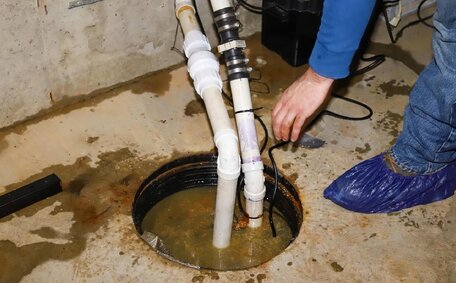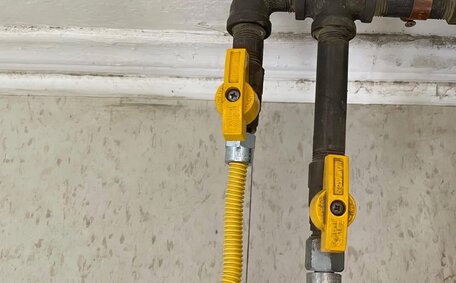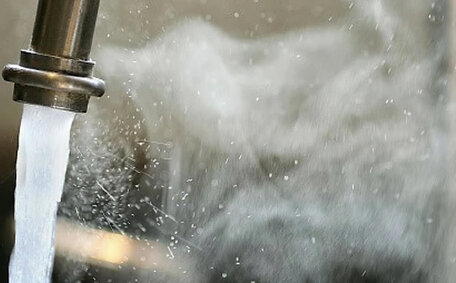Introduction to Gas Pipelines
Gas pipelines play a crucial role in modern life by transporting natural gas safely and efficiently to homes and businesses across Australia. As a trusted plumbing service provider in Kellyville and the greater Sydney area for over 10 years, the expert team at Kellyville Plumbing understands the critical function these underground gas lines serve.
This article aims to provide homeowners and business owners with insightful information on the typical lifespan of gas pipelines. Expect science-backed analysis on industry standards and evidence-based recommendations for protecting your gas pipelines’ integrity.
We will examine the various factors impacting pipeline longevity, including pipe materials, construction quality, environmental conditions, maintenance practises, and evolving safety regulations.
By equipping property owners in the Kellyville region with knowledgeable perspectives on gas pipeline lifespans, we hope to underscore the importance of proactive maintenance and emergency repair services. Let us lend our decade-plus of expertise to help safeguard your pipelines from risks of deterioration, leakage, and costly damages for years to come.
Typical Lifespan Expectations
Industry standards estimate the average expected lifespan of a gas pipeline is around 50 years. This useful life projection indicates the typical timespan these underground gas distribution systems can operate before requiring full repairs or replacements to uphold safe functionality.
In practical terms, a gas pipeline’s lifespan represents the number of years its material integrity and unimpaired performance can be relied upon. Yet despite common assumptions that 50 years constitutes a fixed expiry date, the actual longevity of gas pipelines often defies sweeping generalisations.
Myriad factors beyond merely the passage of time impact the lifespan of gas pipelines. The influences of pipe properties, operating conditions, maintenance activities, and environmental variables can accelerate or delay the ageing process. Judicious pipeline owners recognise lifespan as an adjustable metric dependent on proactive protective measures over the system’s lifetime.
Factors Affecting Lifespan
Several key factors influence the functional lifespan of gas pipelines beyond simply the passage of time. Careful consideration of these variables allows industry experts to make educated projections about pipeline longevity.
The durability and thickness of the pipe material itself impact lifespan projections. Polyethylene pipes of sufficient density to withstand underground pressures demonstrate greater long-term reliability than lower-grade polymers. Meanwhile, steel piping remains vulnerable to corrosion over decades of use.
The quality of initial pipeline construction and installation also affects functional longevity. Contractors adhering to strict industry standards for seam welding, pressure testing, and burial depth position pipelines for prolonged safe usage.
Once in the ground, maintenance routines become paramount. Regular scheduled upkeep checks for leakage, measures pipe wall thickness, and preemptively addresses minor faults. More reactive maintenance via spot repairs and isolate line replacements preserves overall integrity.
Environmental conditions surrounding gas pipelines present further lifespan variables. Fluctuations in soil acidity, moisture levels, and adjacent construction impose strain. Yet whilst external factors remain beyond control, astute monitoring and maintenance mitigate their damages.
Through expertise in materials selection, installation practises and planned upkeep, industry professionals aim to optimise lifespan variables under their management. This empowers prudent pipeline owners to make informed service life projections.
Material and Design Considerations
The innate properties and construction quality of the materials comprising gas pipelines have a governing influence on expected lifespans.
Steel once prevailed as the industry mainstay material, acclaimed for strength and weldability. Yet susceptibility to corrosion sets a functional lifespan of 30-50 years before failures prompt replacement. Increasingly, polyethylene and polypropylene prevail for their inertness and flexible strength, projecting 60+ year lifespans barring third-party damage.
Beyond the pipe substance itself, wall thickness becomes vital. Thicker walls tolerate underground stresses better, yet diameter restrictions and costs curb extremes. The pipeline design process balances adequate flow volumes, pressure resilience and longevity targets.
Supplementary to thickness measures, advanced multi-layer pipe composites embed a corrosion-resistant barrier for steel lines. Alternatively, exterior pipeline coatings function as the first line of defence should outer pipe walls become compromised.
Far from fixed, gas pipeline lifespans reflect a synergy between fundamental material attributes, construction standards and protective measures. Guided by this interrelation, Kellyville Plumbing helps clients target service life extensions through informed maintenance action plans.
Environmental and Operational Influences
Whilst pipeline materials and construction fundamentals govern baseline lifespan projections, the operating conditions and environmental factors pipelines are subjected to introduce further influential variables.
In terms of operations, the volume and pressure parameters of the natural gas transported daily impacts pipeline longevity. High-velocity gas risks internal abrasion over decades, yet excessive swings in flow pressure also fatigue infrastructure. Adjusting distribution levels to consumer demand enables operators to mitigate excess wear.
Externally, ambient conditions surrounding buried pipelines affect ageing rates. Externally, ambient conditions surrounding buried pipelines affect ageing rates. Externally, ambient conditions surrounding buried pipelines affect ageing rates.
Meanwhile, increasingly acidic soil chemistry accelerates corrosion in steel infrastructure.
Maintenance again provides the buffer against environmental strains. Scheduled examinations of cathodic protection systems guard against corrosion. Maintenance again provides the buffer against environmental strains.
And partnership with third-party contractors circumvents damage risk from neighbouring projects.
Via expert oversight of pipeline operations and conditions, the seasoned service crews at Kellyville Plumbing help buffer external variables to prolong asset integrity. Contact our team to explore customised lifespan extension programmes benefiting your properties.
Economic and Regulatory Impacts
Beyond operational and environmental factors influencing gas pipeline lifespans, broader economic and regulatory shifts stand poised to disrupt standard asset life projections.
Investor sentiment and government policies alike continue pivoting towards renewable energy sources as part of net zero emissions efforts. This transition risks instilling financial uncertainty for gas network assets long considered stable income generators.
Specifically, the prospect of diminishing long-term natural gas demand risks stranding existing supply infrastructure. While pipelines themselves may technically endure for decades more, questions around sufficient profitability to fund maintenance could prompt premature decommissioning.
Accordingly, updated financial models for gas pipelines must account for the possibility of truncated lifecycles relative to technical serviceabilities. Accelerated depreciation schedules and shortened reinvestment timelines better align replacement contingencies with environmental targets.
However, regulatory complexities further complicate mapping pipeline lifespan trajectories. Mandates around maintaining minimal supply access for rural regions clash with calls to dismantle purportedly redundant metro networks.
Navigating these overlapping constraints calls for collaborative policymaking and staged transition roadmaps. As both regulators and operators look to balance reliability assurance with decarbonisation, joint pipelines lifespan strategies underpin constructive action.
Maintenance Best Practices
Dedicated maintenance represents the most direct means of safeguarding gas pipeline integrity and extending service life. Routine inspections, cleaning, and minor repairs comprise key maintenance pillars for asset longevity.
Annual inspections vet pipeline corrosion levels, test pressure thresholds, and audit leak risks. Any indications of deterioration become repair priorities before escalation. Inline cleaning then removes internal contaminant build-up through pipeline pigging procedures.
Swift repairs to isolated external corrosion spots, joint failures or minor leaks prevent propagation of damage. Relining compromised shorter sections is preferable to full replacement. Even simply recoating exposed stretches of pipeline helps contain further corrosion spread.
For gas pipeline owners, formalising scheduled maintenance via multi-year service contracts ensures continuity of protective care. Kellyville Plumbing offers custom plans tiered by inspection frequency, leak coverage and repair response times.
Emergency repair services also mitigate against third party-inflicted pipeline damage. Timely location and assessment of suspected strikes or tears facilitates prompt resealing. We equip clients with 24/7 incident reporting contacts accordingly.
View maintenance as the overriding control measure governing asset lifespan trajectories. Prioritising minor servicing expenditure regularly avoids crippling pipeline failure costs down the track. Contact our crew for professional assistance implementing your tailored reliability-centred maintenance strategy.
Inspection and Monitoring
Vigilant inspection and monitoring regimes represent the front line of defence for preserving gas pipeline integrity and lifespan. Industry experts deploy an array of technologies and methods to deliver comprehensive oversight programmes.
In-line inspection gauges known as "pigs" operate within pipelines to measure wall thickness and identify defects via magnetic flux, ultrasound or other sensor arrays. Data logs then quantify corrosion rates and pressure fatigue factors to estimate remaining life.
External cathodic protection systems generate an electrical current along buried pipelines to counteract corrosive soil chemistry. Regular testing ensures adequate protective voltage levels are sustained.
Leak survey tools such as gas detectors and ground-penetrating radar locate both major and micro leaks. Speedy leak repairs prevent escalation into further pipeline deterioration.
Industry leaders further conduct routine foot and drone patrols to identify surface infrastructure vulnerabilities. Third party strike risk zones near intersections or construction sites become inspection priorities.
Tying these monitoring processes together, gas pipeline operators implement formal integrity management programmes. Customised maintenance regimes compile testing data, project future repairs and help pipeline owners budget for ultimate replacements.
Kellyville Plumbing offers fully managed integrity solutions combining the latest inspection innovations with reactive maintenance services. Contact our team today to implement a comprehensive lifespan preservation system for your pipelines.
Repairs and Upgrades
Even structurally sound gas pipelines reach stages where judicious repairs forestall imminent failures. Additionally, new construction materials and monitoring tools unlock further lifespan extension opportunities.
Commonplace pipeline repairs include spot welds over corroded sections or joints, isolated pipe segment replacements and protective recoating work. Though intrusive, such minor interventions sidestep wholesale functional disruption.
Upgraded repairs can encompass new thermally fused pipeline linings for leak and corrosion resistance. Contemporary sealants and carbon fibre sleeves likewise reinforce vulnerabilities prone to cracks or fractures when shifting soil applies stress.
Operational upgrades also prolong pipelines through improved flow control and monitoring. Smart pigging data now relays to automated valve systems governing pressure and volume. Remote leak alerts triggered by sensors enable rapid shutdowns as required.
By continually incorporating both remedial repairs and preventative upgrades, Kellyville Plumbing helps clients achieve optimal gas pipeline lifespans. Contact our team today to implement customised asset management plans leveraging the latest maintenance innovations.
Replacement or Abandonment Decisions
Determining the juncture at which persisting with gas pipeline repairs no longer proves viable versus asset replacement or abandonment represents a pivotal decision. Industry experts weigh criteria including safety, reliability, regulations and costs when evaluating terminality options.
Safety remains the foremost driver. Where corrosion or cumulative faults hike the risks of explosions or leakage beyond acceptable thresholds, abandonment or replacement ensures community wellbeing. New materials and construction standards also obligate upgrades.
Simultaneously, supply security factors feature in calculus. If fault accrual makes unplanned outage frequency unacceptable, upgrades guarantee distribution integrity. However rural pipeline segments sometimes persist despite lower gas demand due to access guarantees.
Mandatory industry standards also dictate permissible impairment levels. Governing bodies phase out legacy materials like Tro plastic piping due to brittleness. Financial contextualisation follows, balancing replacement costs against maintenance and liability expenses given projected asset lifespans.
Abandoned pipelines see filled lines left buried according to modern restoration standards. But replacement decisions hinge on demonstrating ongoing viability under transformed energy consumption models. Consult our professionals to explore your options aligning with safety codes and consumption trends.
The Future of Gas Pipelines
As natural gas maintains crucial heating, manufacturing and energy security roles amid economy-wide decarbonization, the future of gas pipeline infrastructure remains contingent on navigating sustainability coexistence.
Expanded renewable power profiles prompt questions around precursor sunsetting of gas networks better directed towards reliability protections in the interim. Pipeline lifespan projections and operating models still demand reconfiguring for rescaled, emissions-conscious gas supply chains.
In terms of materials, hybrid hydrogen-ready designs gaining traction indicate lifespans accommodating fuel switching capabilities. Construction standards equally respond via stringent methane leakage prevention measures around joints and metres.
Safety also takes precedence in next-generation network management. Pre-emptive hypersensitive leakage monitoring, emergency isolation protocols and resilient warning systems will underwrite community trust and licence renewals.
As regulators redefine the boundaries of gas role amid economy-wide decarbonization, gas pipelines retain integral functions as far as technology permits emissions mitigation. Kellyville Plumbing supports this transition via expertise upholding critical asset integrity and performance benchmarks in your local community.






